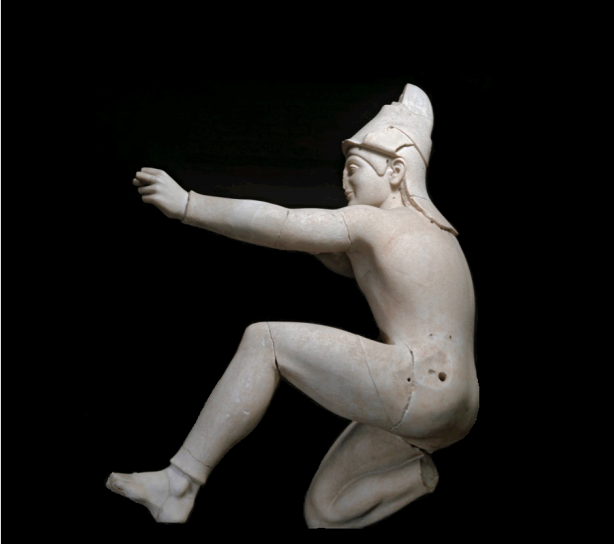
IRIS login | Reed College home Volume 96, No. 2: June 2017
Hum 110: the Lost Lecture
The campus debate over Hum 110 is as lively as ever, and it had an unfortunate consequence this week—the first lecture of the semester was called off due to interruptions from student protesters. Thanks to the magic of the internet, however, the presentation need not be lost to posterity. In fact, I found this lecture by Prof. Lucía Martinez Valdivia so compelling I decided to post it in its entirety (with permission from Prof. Martinez Valdivia, of course.)
Origins, Canon, Instability
Good morning! I’m Lucia Martinez Valdivia, and in addition to Hum 110, I teach in the English department, focusing on sixteenth- and seventeenth-century poetry and how it intersects with music, history, and religion. I’m female, mixed race, American and Peruvian, gay, atheist, and relatively young. I study poetry that is basically the opposite of me: male, white, British, straight, God-fearing, five hundred years old. And I love it.
I also love teaching in Hum, but not just because many of the texts we read and objects we study are also the opposite of me. To me, Hum 110 perfectly captures the importance of origins and instability to what we do as scholars and students, regardless of the disciplines we pursue. Whether you study literature, physics, poly sci, anthropology, art—whatever ends up moving you most in your four or so years here—you will be asked to think critically about your field of study.
Origins are central to this. You need to know and understand what people have said and thought before you if you’re to push that knowledge forward and make it meaningful to you—which will simultaneously, hopefully, render the work you produce here meaningful. The texts we read in Hum constellate in such a way as to show us and make us question what has long been understood as foundational—canonical—to the various disciplines taught in higher education. (You’ll hear the word “canon” a lot around here. It’s basically shorthand for a group of texts, beliefs, works of art, whatever, that are generally accepted as important and foundational to a culture. There’s no gunpowder, and only one N.)
Hum does two things beautifully to canon, to my mind: first, it begins to expose the sources and influences for these “foundational” texts, these origins. The Bible didn’t just magically appear in a temple one day in late antiquity. The Greeks—whatever that means, given that each city-state was a nation unto itself, usually at war with its neighbors—didn’t have an innate sense of what future people would find beautiful when they decided to carve marble statues.
On the contrary, and as you’ll learn in lectures throughout the year, when we look closely at the geographic and historic context in which these statues were carved, we’ll realize that they not only looked different in the moment of their creation, but resembled, quite closely, statues from cultures we now think of as non-Western, not “canonical,” not “our” culture. A polished, white marble statue of an archer from ancient Greece, long held up as an example of classical beauty, is suddenly, through the painstaking work of archeologists and art historians, revealed to have been originally painted all over in bright, primary colors. Now “classical beauty” isn’t pure marble, Greek or Roman, but looks eastern rather than western, all of a sudden “exotic,” downright “foreign” and perhaps even “gaudy.” The Western Europeans and North Americans who thought they knew what the Greeks and Romans found beautiful, and who they imitated in the hopes that their empires and legacies would echo those classical ones, would probably be repulsed by this art as it originally was—by what was actually then considered beautiful.
This is an example of the second thing that Hum does to canon, and the one that to me is the most vital. It reveals the instability of what we do, as scholars and students—the instability of what we think we know, an instability that the idea of canon can mask, can make difficult to see. We think we know what people found beautiful, but we don’t. We think we know what an identity is or was, but we don’t. What does it mean to describe Sappho as a lesbian if sexual acts weren’t to become formative to the definition of identity until thousands of years later, in a culture an ocean away from hers? What does it mean to label Aristotle or Virgil as “white” if, in some parts of our country today, Greek and Italian still aren’t considered “white”? Does Hum 110’s inclusion of something like Gilgamesh render that text canonical, even though it wasn’t widely studied by college and high school students until relatively recently? The disciplines we pursue—the study of history, for example, or anthropology—are constantly changing and developing not only new methods, but new missions, the type of thing we’ll discover as we read early historians together with modern histories that feature them.
Even, or perhaps especially, the term “Western” will come under repeated pressure in Hum 110. This course isn’t titled “Western Humanities,” in part because much of it is drawn from geographic areas not traditionally considered Western—areas like Iraq, Iran, Egypt. I like to think that the more important reason it’s not titled “Western Humanities” is because, well, what would that even begin to mean? If Greek art is drawing on so-called Eastern influences, if the various origins of the Bible are in the Near or Middle East, then what on earth do we think we’re saying when we label Greek art or the Bible as European, as parts of the Western canon? (For those of you keeping track, the title of this course as it currently stands is “Introduction to Humanities: Ancient Greece and the Mediterranean.” This acknowledges the fact that yes, Greece is at the approximate center of this course, but that we look at what leads and contributes to it, and what results from it—the interdependence of these cultures, areas, moments, influences. That’s why the course has a tight geographic and historical focus.)
I ask one thing of all of you—something my conference will be asked repeatedly, because I always have to remind myself to do this—and that is to say Yes to the text. This doesn’t mean that you agree with or endorse anything and everything that happens to be printed on a page. By “say Yes to the text,” I mean that one should read things in good faith, understanding the distance, the strangeness from our own historical moment. If we get distracted by Plato’s misogyny or Lucretius’s imperfect mastery of physics, we miss the point, the bigger pictures of these works—the way Plato structures his arguments, for example, or the fact that Lucretius was driven to theorize about the nature of the physical world when that just wasn’t something people did. Everything that is now canonical was once innovative. This doesn’t mean that we can’t acknowledge problems, weaknesses, inaccuracies, that we can’t question these works; rather, it means that we should do so productively, in good faith. Don’t write Plato off as a misogynist. Instead, try considering how it is that misogyny is a logical result, for him, of his reasoning.
Saying Yes to the text is ultimately a call for empathy, to stretch your imaginations to try to inhabit and understand subject positions that aren’t yours, the points of view of people who aren’t you. Empathy, not sympathy—the task isn’t to endorse or excuse, just to try to begin to understand. Hum is a class for beginnings, one which should raise questions for you, which can and hopefully will destabilize your understanding of your identity and your place in the world. It won’t give you answers. It should, done well, teach you to ask questions.




LATEST COMMENTS
steve-jobs-1976 I knew Steve Jobs when he was on the second floor of Quincy. (Fall...
Utnapishtim - 2 weeks ago
Prof. Mason Drukman [political science 1964–70] This is gold, pure gold. God bless, Prof. Drukman.
puredog - 1 month ago
virginia-davis-1965 Such a good friend & compatriot in the day of Satyricon...
czarchasm - 4 months ago
John Peara Baba 1990 John died of a broken heart from losing his mom and then his...
kodachrome - 7 months ago
Carol Sawyer 1962 Who wrote this obit? I'm writing something about Carol Sawyer...
MsLaurie Pepper - 8 months ago
William W. Wissman MAT 1969 ...and THREE sisters. Sabra, the oldest, Mary, the middle, and...
riclf - 10 months ago